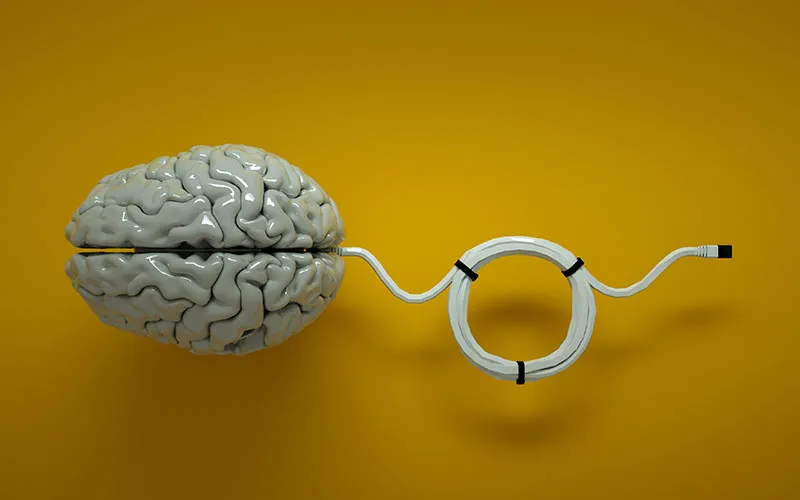


AI: Drop it like it’s intelligent

I recently got married and getting my wedding suit had difficulties, organising my groomsmen, finding a time to go in to get measured up, also finding exactly what I wanted wasn’t quite in the cards for me. What if I didn’t have to go into a tailor though? What if all I had to do was find my suit online, pick the fit, send off a couple pictures and maybe a few measurements, then hey presto the perfect suit ends up at my door a couple weeks later. Well that’s what The Drop does.
We at Pull have a partnership with Microsoft. The partnership allows us to talk directly to Microsoft when dealing with certain interesting problems or challenges, which comes in handy when working on an experimental AI project. This is great for our clients because by extension they have access to the problem solving skills of Microsoft for any particular business problems they’re dealing with. As a partner it also means we get to participate in hackathons hosted by Microsoft such as one last year, where we met The Drop for the first time.
The Drop came to the Hackathon with a fair amount of clean data and a focused goal. They wanted to improve the user’s experience, making the shopping process as simple as possible. They often found that customers were having difficulty measuring themselves and wanted to simplify that process. It was soon realised that AI could possibly help in some way, from that decision to use AI a few ideas arose of how it could help their business problem:
1.
They had an issue with people of different sizes, their tailor could make general estimates of the 22 measurements based on the other 10 they had.
However, sometimes a customer would end up with a large amount of back and forth before eventually coming in for a manual measurement, for example they might be unusually tall so the general estimates didn’t line-up.. We discussed the possibilities and what came out of it was an anomaly checker for supplied measurements, which helped confirm the measurements are correct and flagged up any anomalies, allowing their stylists to get in contact straight away.
To do this we used Microsoft’s machine learning studio and The Drop’s data to create a machine learning model for anomaly detection.
2.
Something The Drop’s clients often complained about was taking the measurements, while they had tutorials on how to measure sometimes the customer would do it wrong or just have trouble doing it. So, we discussed the possibility of reducing the amount of measurements required and if we can whittle the list down to an easier amount. We then discussed an AI model that can take measurements of an individual without using a measuring tape. This process has two steps:
- Creating a model that could predict other measurements based on a smaller set of measurements giving. They were already doing this manually with their tailor, so it was making that a more automate process (freeing up the onboard Tailor to busy
himself with other things). - The second part to this was figuring out how to measure a person from an image or video to a reasonable accuracy. This requires the AI to be able to pinpoint and mark specific points of the body.
We focused on the first part, because if we were able to reduce the measurements needed it would mean the image or video would need to ascertain a smaller amount of measurements to a decent accuracy. The requested accuracy was plus or minus a centimetre. Quite a hard task for a computer to do with only an image or a few measurements, or at least so we thought.
We used the Machine Learning Studio to create a machine learning model with The Drop’s data, each model we created was used to predict a specific measurement. With that one of the Drop developers was able to create a small prototype application that when fed a small set of measurements would return estimates of the other measurements. We did a test with myself and one of the other pull developers on the second day, all with the assistance from The Drop’s tailor to confirm how accurate the models were.
Nearly all the measurements were within a centimetre accuracy, one or two were slightly outside of that. This was in the first two days with a not so huge data set, this was the prototype The Drop needed from the hackathon to show they could make this work.
The second part we looked into a technology called Posenet (This would help pinpoint parts of the body for gathering measurements).
This for most of us resolved the point tracking issue, but one issue remained, to figure out the metric distances in the image. There were multiple options that as a collective with Microsoft we discussed. This included using a common object in the image to figure out the measurement, getting the person’s height and using the point of the top of the head and the bottom of the feet, using Pythagoras and other mathematical theory to get height of the image itself.
All of these are eventually searching for a coefficient for transferring pixel to metric length, so figuring out the pixel coordinate of the shoulder to the pixel coordinate of the wrist can be easily transferred to a metric length for a measurement. Now I know that all sounds very technical, and it was! However, thanks to our collaboration with Microsoft and two minds being better than one, so to speak, we were able to create a prototype for The Drop to base their future development work on.
3.
The Drop also wanted to be able to render a 3D model of the person. This would help for imaging suits onto the user and also getting more accurate measurements. Rendering different textures and colours would also likely be done onto the model. During the hack we looked into how image classification could identify patterns for suits, stripes, squares, plain etc. Using Microsoft’s cognitive service, Custom Vision, we also created a set of learning data from stock images on Google, we searched for different patterned suits and added them to our Custom Vision model. By the end of the last day we had a custom vision model that would have a fair confidence for predicting the type of pattern on the suit jacket.
Stephen from The Drop commented: “The most immediate and obvious result is a streamlined supply chain. With our three AI concepts, we’ve been able to enhance what was always there – our workforce – to produce custom garments faster.”
“We had clear and well-structured data to start with, and we’ve been able to implement the AI concepts quickly alongside our existing Microsoft systems. Plus, we’ve had help from an expert partner.”
END OF BLOG SUMMARY:
A lesson to learn and remember is that technology is great, but be like The Drop; Don’t use it for the sake of it, use it to make a better experience for your customers.
Read what Microsoft had to say about The Drop and Pull here.
CTO - The DropPosted 2 May 2019 by Arthur Gaff
Stephen Stroud
Posted 2 May 2019 by Arthur Gaff